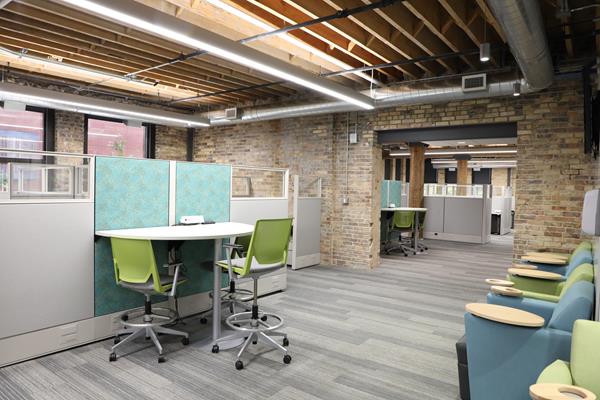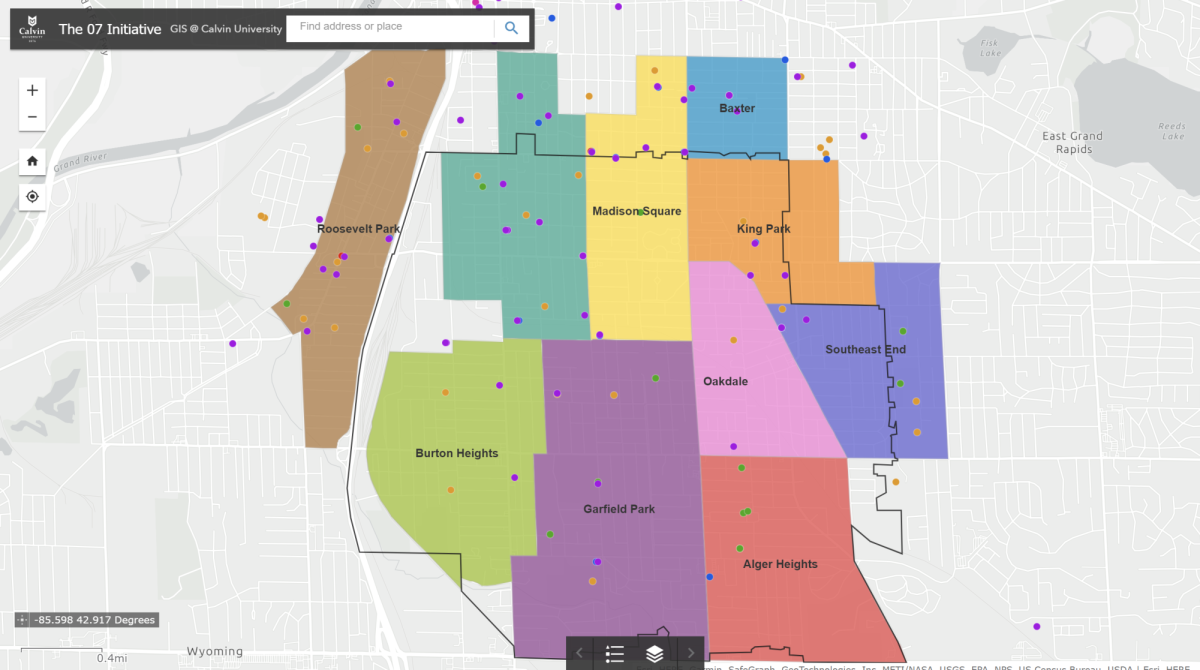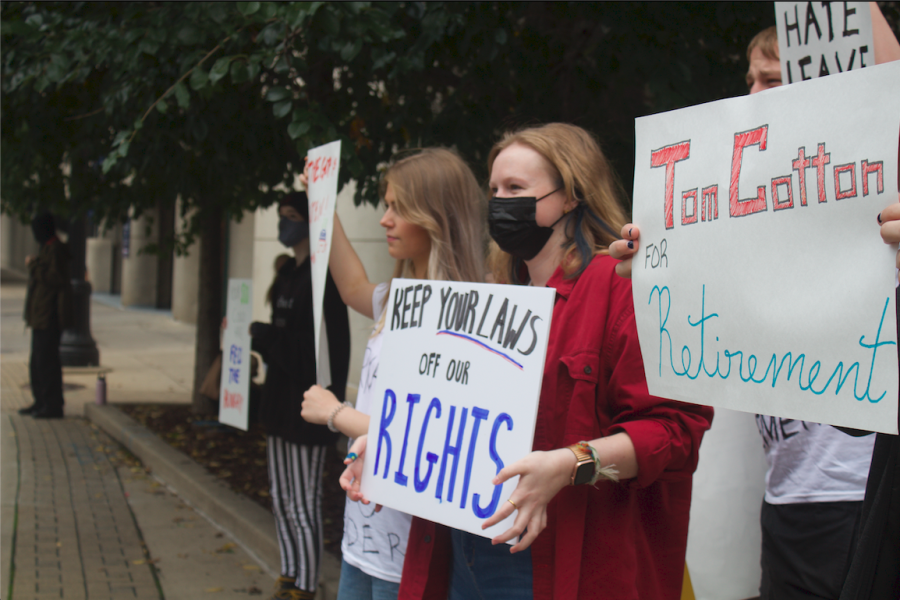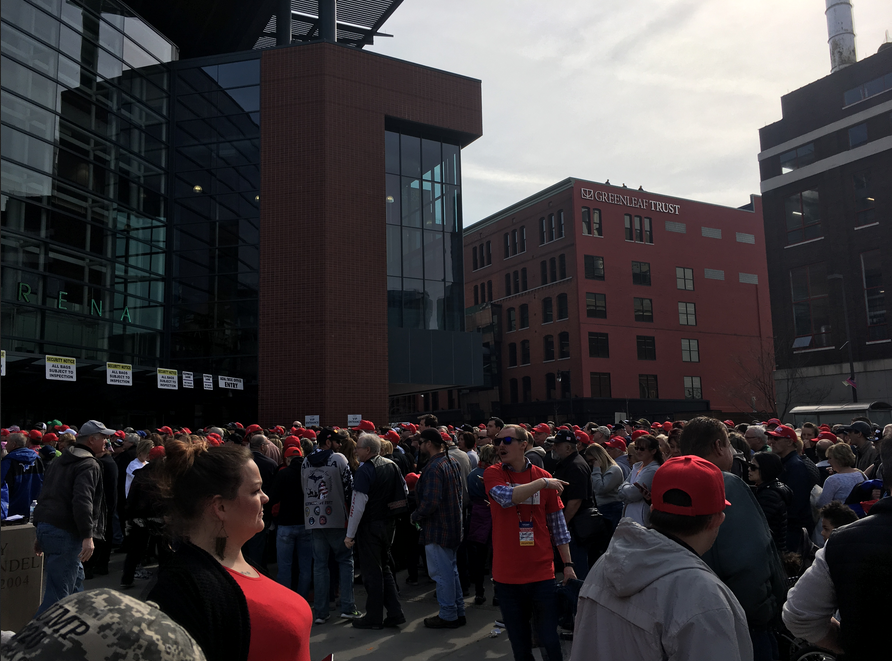A growing group of local urban advocates are pushing to replace the S-curve of U.S. 131 that passes directly through downtown Grand Rapids with something more sustainable, aesthetically pleasing and economically beneficial ahead of a long-term planning session by the Michigan Department of Transportation (MDOT) regarding the future of U.S. 131.
The S-curve was completely rebuilt in 2000 after serious structural problems were discovered in 1998. MDOT launched a concerted campaign to convince businesses that it would be possible to completely close U.S. 131 for a season to rebuild it. Many businesses were worried that closing U.S. 131 would seriously affect traffic congestion and commercial success in the downtown area, but MDOT convinced the public that it would be feasible, and in 2000 the S-curve was torn down and rebuilt.
Proponents of removing the S-curve cite a variety of problems with the structure. Cost of maintenance is one — the bridge requires periodic repairs. Another is aesthetic appeal.
“131 is an eyesore when you get 20 feet above the skyline,” says Mike Gessel, chairman and CEO of Rockford Construction Company, of the hulking concrete bridge across downtown Grand Rapids. “It is really a problem.”
A last potential benefit of removing 131 is the valuable riverfront real estate it could potentially open up. Depending on the method of replacing 131, as much as 2 million square feet of new land could be opened up, which some estimates suggest could nearly double the size of the central business district.
Removing the elevated highway would also mesh well with the Grand Rapids Master Plan for urban development, as well as the advice of many national urban planning institutes, including The Congress for the New Urbanism and Projects for Public Spaces. Many other cities have begun removing elevated highways, including New York City, Boston, San Francisco and Milwaukee.
Options for replacing the S-curve include putting that entire stretch of U.S. 131 underground, which would free up the most space but cost a prohibitive amount, or bringing it to the same height as the rest of the streets and turning it into a riverfront boulevard, which proponents compare to Lake Shore Drive in Chicago.
Proponents conclude that removing the S-curve would provide a major boost to the aesthetic and commercial appeal of downtown Grand Rapids, as well as promoting Grand Rapids as a center for urban development.
“There is all kinds of stuff that’s going on nationally with cities that are removing or re-visioning their highways,” says Mark Miller, an architect with Nederveld Inc. “We could do that here. If you read about what these other cities are doing, they’re grappling with the same issues. We have to make this effort less about the car and more about people.”
The Michigan Department of Transportation, however, is not as optimistic.
“From our perspective, our current funding makes [the project] virtually impossible,” says a spokesman for MDOT. “Unless the whole revenue system is changed, there isn’t enough money.”
Michigan governor Rick Snyder has already been attempting to institute new taxes to bring in enough funding for MDOT to adequately maintain current roads, and given that the cost of remaking the S-curve in 2000 was about $145 million, the cost of completely remaking the S-curve again would be difficult to overcome. MDOT had a difficult time completely repairing the bridge in 2000 even with a surplus of funds.
Sophomore Rachel Johnson recognizes that any project would be costly, but is still in favor of renovating the S-curve.
“It would be a good idea to consider because right now it divides the two sides of the city.”
Her proposed solution would be to put the highway underground and to build a park above it, which other major cities have done, including Madrid.
“It would be a great way to reconcile the two sides of the city.”








